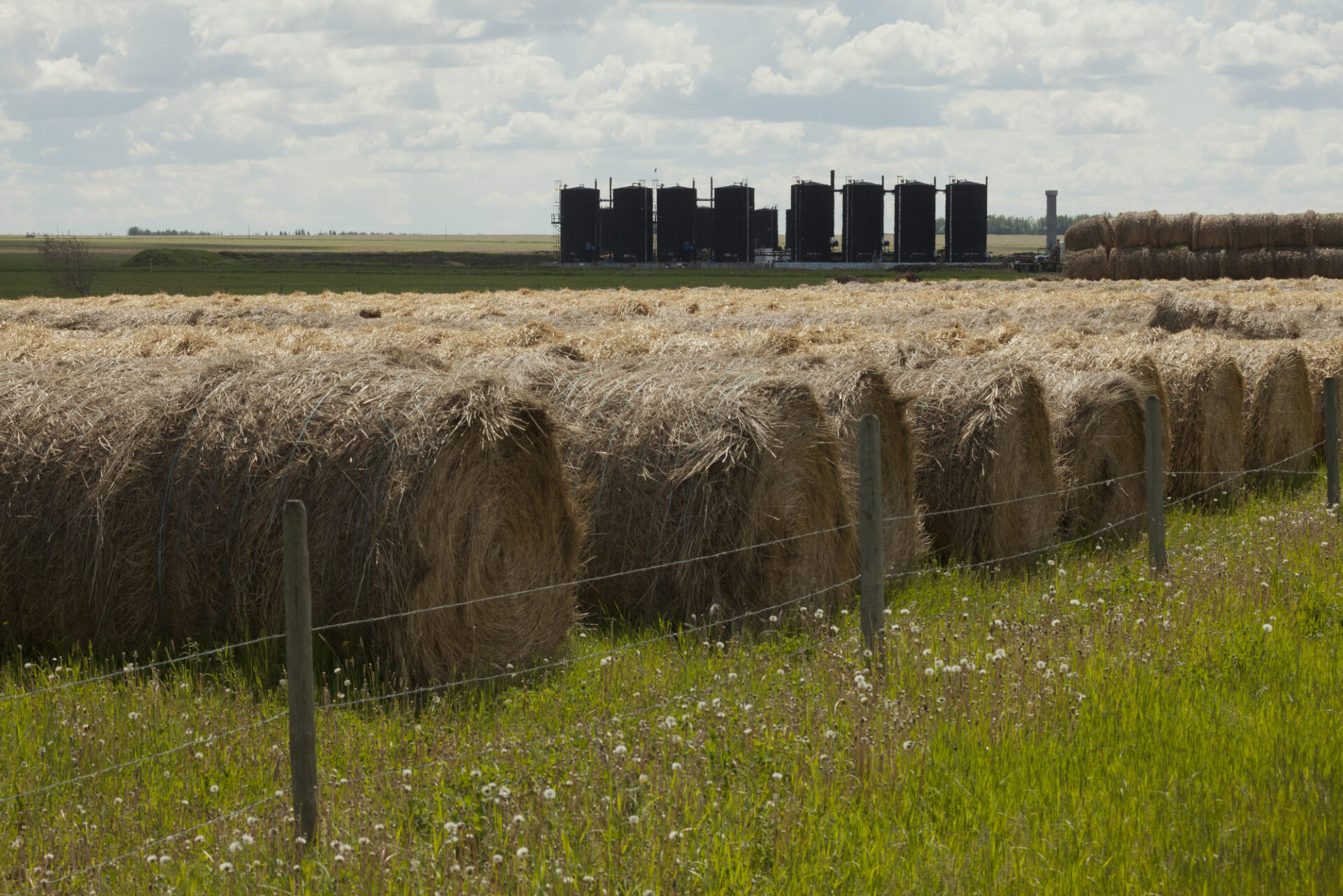Alan Gignoux has been investigating the complex issues surrounding the Albertan oil industry since 2010. His photographs record the ruthless exploitation of a valuable natural resource, as well as the explosive economic growth in the region. Oil Sands includes photography, recorded interviews, and video. It has been developed into an award-winning photobook and will soon be released as a feature length documentary.
“One of the biggest global warming crimes in history.”
The main oil sands development at Fort McMurray is so large it is visible from space. In order to access the oil deposits, vast stretches of boreal forest have been destroyed and irreplaceable wetlands with the wildlife, flora and fauna they support, lost forever. In their place are vast surface mining pits where earth moving equipment and mammoth bucket wheels cut away at the “overburden” of surface growth to access the black earth and bituminous oils sands beneath. The bitumen is then separated from the unwanted substances in the oil sands mixture yielding by-products, such as sulphur, which is stored in massive yellow piles, and a toxic slurry of heavy metals and hydrocarbons, captured in extensive tailings ponds.
The industry is accused of water and air pollution. Residents complain of health problems among both human and animal populations. Farmer Alain Labreque felt forced to abandon his property in Peace River because of air pollution from a neighbouring in situ mining operation: “Our permanent house has become an unliveable environment,” he comments. Woodland Cree First Nation member and Cadotte Lake resident Donna Ominayak says: “Nowadays, if you don’t work for the oil companies you don’t amount to anything, because that’s all there is – they’ve overwhelmed us. They’ve destroyed our land, our habitat, our water – they’ve polluted our air.”
“We have the highest incomes in Canada, the highest disposable income, the lowest taxes of any jurisdiction.”
Frank Oberle, member of the legislative assembly for the Peace River Constituency in Alberta
Despite this, the majority of Canadians are in agreement that the Oil Sands make a significant contribution to the provincial and national economies, providing essential employment and revenues.
However, this affluence comes at a price, not only for the environment, but also the people who work in the oil industry. In the words of Dr John O’Connor, a medical doctor in Alberta, “In a one-industry region, thousands of workers and their families become trapped by the “velvet handcuffs” of employment. With no remotely comparable incomes anywhere else in Canada, and frequently unimaginable debt loads, a captive, enslaved populace has little or no options.”
Alan has been investigating the complex issues surrounding the Albertan oil industry since 2010. His photographs record the ruthless exploitation of a valuable natural resource, as well as the explosive economic growth in the region. The images are supplemented by in-depth interviews with individuals from a range of perspectives – speaking to lawyers, politicians, academics, oil workers, and local people.
PORTFOLIO















Share this...